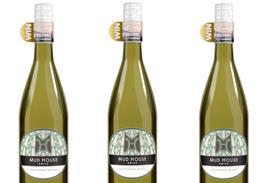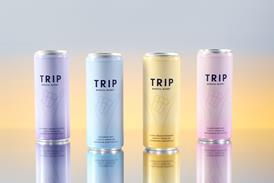To be top of the class when it comes to back to school, retailers need to pack in healthy-eating options and offer plenty of time-saving solutions
Is it really that time of year again? As kids celebrate (and their parents commiserate) the start of the summer holidays, c-stores should be swotting up to make the most of the busy back-to-school period set to come.
The key to unlocking this lucrative convenience occasion has always been the lunch box category. However, the political machinations of the past few years have meant the sector is looking a lot different from a few short years ago.
Back in 2014 the then-coalition introduced universal free school lunches to the UK for primary school kids aged seven and under. Whatever the benefits of this move, it worked to kick retailers hard in their lunch boxes. Predictably, the number of packed lunches eaten by those children dropped a massive 47.6% by September 2016 (Kantar) as parents plumped to save money and let schools take the strain.
Prime Minister Theresa May was set to over-turn this move after this year’s June election. Yet her own beating at the ballot box means free school lunches are staying on the curriculum, for now at least.
Today, Kantar reports that this decline in kids’ lunch boxes has plateaued. But many c-store professionals will be wondering where this leaves their own lunch box offer over the long-term.
Happily, retailers report that tweaks to the bigger picture haven’t massively affected the convenience channel’s back-to-school approach. And that’s because this market offers a myriad of opportunities not just limited to the school lunch box.
Modern c-stores are school run-saviours for parents who need to bag a half-time snack for their kids’ after-school football practice, older students who want school-lunch munch, and even, in some areas, nannies who need a cheeky latte while they walk their charges to nursery. All of which means there are more chances than ever for back-to-school to boost your bottom line.
For c-store retailers, the back-to-school market is a game of two halves: between 8.15am and 9am, and after 3.15pm. As Steph Latham from Lostock Hall Spar in Lancashire explains, both cater for distinctively different customer needs.
“Usually our school-run customers start coming in about 8.15am,” she says. “So you get the younger kids coming in with their parents first, then the older ones who wait for the bus outside.
“In the morning, it’s not necessarily about things that they’ve forgotten for their lunch. It’s more likely to be getting a cereal bar or a snack to eat on the way to school – or something extra to add to what’s already in the lunch box.
“We’re talking about smaller items here. So it won’t usually be a sandwich or anything like that, but more often a packet of crisps or a piece of fruit. However, parents will also pick up ingredients for that night’s tea, as well as milk and bread for the next couple of days, or something along those lines.”
As you might expect, morning tends to be a time for generally virtuous buys, while the after-school period is more often about the sweet treats. For Steph, if the weather is warm in September then this means slushies, while if it’s colder sweets and chocolate win out for kids.
“Mainly parents have kind of bribed their kids with ‘if you’re good at school you can get something on your way home’ – so they might come in for some sweets or a slushie after school,” she says.
“On hotter days the slushie machine can get a bit messy – especially if small children are using it and they spill a bit on the floor. But we clean up mess as we see it, and we find the older children are really good at keeping it clean.”
School-run custom is also important to Jack Bradley, from Bradley’s Supermarket in the village of Quorn in Leicestershire. At the store’s relatively rural location he says that there’s a large college “literally behind us”, along with a school further up in the centre of the village, plus a couple of local pre-schools.
Treating kids right
Health-conscious parents might be choosing more fruit than ever for the kids’ lunch boxes, yet confectionery still has its place – not least as an easy way to celebrate good grades (or to bribe children into going to after-school clubs). But after the big holiday splurge, you have to ensure that the price is right.
“The key factor to consider is that the period falls right after the big school holidays that will have seen parents’ money spread across theme parks, restaurants and cinemas,” says Jonathan Summerley, Hancocks’ purchasing director.
“Here, price becomes the overruling dingdong for school-run parents when it comes to confectionery.”
Hancocks’ Crazy Candy Factory range hits the sweet £1 (or lower) price point and adds extra value to keep kids entertained. For example, the Space Flickerz novelties let children blow off steam with a ball game while they have their treat.
Elsewhere, chocolate biscuits make a popular lunch box treat, appearing in 133.6m lunch box occasions (Kantar).
Mondelez International is hoping to expand the segment with Cadbury Roundle (its first fresh launch under the Cadbury licence). Featuring chocolate and crispy wafer, the milk chocolate variant is available in a single format customers can wedge next to a sandwich.
Jack maintains that for him the peak-time for this market isn’t necessarily first thing in the morning, which is dominated by builders, or people looking for a newspaper on the way to work; it’s after the school bell has rung that the trade comes into its own.
“That’s when we see parents walking back from dropping their kids off at school,” he says.
“They’ll drop in to pick up morning goods and other bits and pieces. Then, a couple of hours later, we have a bit of a lunch-time rush because some of the students at the college are allowed out for lunch, and some come to us.”
That’s a similar snapshot to what Avtar Sidhu (Sid) sees every day from behind the counter at his Sukhi’s Simply Fresh store in Kenilworth, Warwickshire.
“What we find here is that a few parents will go to the school, drop off their child, and then they’ll be back in the store to do their main shop,” he says.
“Then they’ve got their hands free so they can relax, get a shopping trolley and have a proper look around in peace.”
Retailers agree that during the initial 8-9am period it’s the snack category that gets tills ringing. The stats from Kantar back them up. Its research shows that the top 10 components in the nation’s lunch boxes include key c-store stocks such as cheese snacks (found in 554.3 million lunch boxes), savoury snacks (found in 219.9 million) and yogurt (present in 200.4 million).
Cheese snacking is one of the fastest-growing parts of the lunch box market – growing 4.1% year on year (Kantar). This is why it’s so well-represented in NPD from the likes of Dairy Crest, Lactalis McLelland and Kerry Foods.
Amy Fisher, shopper marketing controller at Dairy Crest, says: “The star performer in cheese is undoubtedly the snacking sector, which has grown by 14% volume (13% value) in the latest year, fuelled both by consumers choosing portion control as a means to help manage their health and a recent consumer movement away from sugary treats and towards products that are seen as more naturally nutritious.”
Dairy Crest is honing in on the category with its Cathedral City snacking range, spearheaded by its Cathedral City Snack Bar, while Kerry Foods’ GoGo’s aim to mix cheese appeal with on-trend ingredients such as edamame beans.
Convenient cheese formats that offer solutions for easy meal preparation in today’s fast-paced society, such as sliced, grated & spreadable cheeses, have all achieved good growth through the channel. Cathedral City has again been a strong contributor, its sliced range driving growth of 33% value, while Cathedral City Spreadable, boosted by the launch of two new flavour variants (extra mature and garlic & herb) in 2016, has achieved 42% year-on-year growth.
Jo Huergo, Cathedral City marketing controller, says: “Catering to consumer demand for quick and easy meal solutions, the Cathedral City Spreadable range offers an authentic, delicious spreadable cheese with a real Cheddar taste profile, perfectly suited to today’s diverse snacking and lunchtime foods.”
Meanwhile, Lactalis McLelland introduced Seriously Squares last year to tempt adults and older children with convenient and tasty cheese portions.
“The lunch box accounts for 13% of cheese consumption occasions, with 4% being packed lunches for kids and 9% adult lunch boxes (Kantar),” says Mike Chatters, sales director for Lactalis McLelland.
“When you’re looking at a £2.8bn category with 98.6% penetration, the lunch box occasion represents a considerable sales opportunity.”
Thinking about the wider dairy category and considering those sandwich-making mums and dads, spreads are another important category to get right. According to Partners for Growth, 99% of households are buying into the butter, spreads and margarine category each year and it is a key top-up and distress category for convenience stores.
There’s a wealth of merchandising advice on the company’s website, www partnersforgrowth.unilever.com.
Lunchtime munch
“When we look at the figures, 26% of lunch boxes contain a packet of crisps or a snack,” says Matt Collins, trading controller for convenience and wholesale at KP Snacks. “That gives you a rough idea of the scale we’re looking at.”
This immense snacking opportunity gives retailers plenty of scope for stocking products parents can grab on the go for their kids’ lunch boxes (or their own). And it’s clear that there’s one factor that trumps all others when choosing – taste.
“The ‘hunger state’ is what we’re tapping into,” says Collins. “Within that state, flavour is definitely the key driver. In our portfolio McCoy’s is a product that really delivers on that. To support the range we’ve been giving McCoy’s Chip Shop Chips a good advertising push on TV.
“Also, this year we’re putting KP Nuts on TV for the first time since 1983 – it’s part of the £13m we’re spending on our brands above the line.”
KP is also behind Pom-Bear, a gluten-free potato snack that’s been something of a cult hit with pre-school kids (and their parents).
“Yesterday, I was out and about and I saw lots of people having Pom-Bear as part of their picnics,” says Collins. “The big challenge for us is that it has really high levels of repeat sales; we’ve got to just drive more penetration.”
Advice in action
Ramesh Shingadia, who owns two Londis stores near Horsham, West Sussex, used the Partners for Growth advice for his spreads and margarines category.
He says: “We re-merchandised the section using the planograms and we saw a phenomenal jump in sales – a 40% increase. Following that success, we have applied the same principles and planograms to other categories across the store, with similar success.”
Just like in the wider c-store market, consumers after key items aren’t necessarily looking for multi-pack buys. This is one of the reasons Jack believes that, with his customers at least, the multiples “rule” with many items in the lunch box roster. “We’ve seen sales of things such as multipack crisps drop slightly at our store,” he says.
“That may be down to the health trend and the fact that lunch boxes have moved on a little bit, but I think it also shows just how multiples are running the market in that respect.”
“Personally, I think that the days of c-stores selling the six-pack of cartons and the six-packs of crisps are done.
“On the other hand, where I do think that convenience stores pick up a lot of important business is when parents forget something their kids want. So, they’ve left the Cheestrings out of their weekly order and they’ll come down to us to buy them in the morning.”
Whatever customers are coming in-store for, and despite kids’ demands for Slush Puppies and chocolate bars, health is becoming an ever-bigger driver in the back-to -school category.
Kantar reports that a high proprtion of consumers say they choose a lunch box component “to get a portion of fruit or veg” in their diet. However, what customers say in surveys and what they do at the till are sometimes very different, yet Steph says there’s evidence health is starting to win out on the school run as healthy-eating messages begin to get through.
“I’ve started getting snack bananas in this week,” she says. “We used to just do packs, but I wanted to go down a more healthy-eating route where kids didn’t have to choose between a bunch of bananas or some crisps.
“I think you have to offer the healthy options as a retailer now – and that’s a good thing. Parents are becoming a bit more savvy about healthy eating and they like the convenience of single pieces of fruit so they won’t have to take a whole pack shopping or whatever. It’s just easier for them all round.”
As seen on screens
As all brand owners know, the quickest way to a child’s heart is through a cunning TV or movie tie-in. So it’s no surprise that for this back-to-school season there are plenty of products aiming to create that all-important pester power.
One of the most innovative is Naturelly. Parents of under-fives will know the popularity of Nanny Plum and her jelly mishaps on Ben & Holly’s Little Kingdom. Now Naturelly has created a new Magic Jelly snack for children aged 12-months plus to fit into lunch boxes.
Also feeding the tie-in trend for older children is Volvic, with its kids’ range featuring ‘mascot bottles’ designed with popular characters from Star Wars and Frozen. All come in a 330ml format to make them lunch box-friendly.
“This offers a huge opportunity for retailers, especially during the back-to- school season,” explains Volvic brand lead Tom Hickton.
“Consumer appetite for bottled water is growing, however, at the same time we know that as many as 60% of children in the UK don’t drink enough water, and only 7% of lunch boxes contain water.”
Grown-up outlook
When looking at their school lunch box offer for kids, retailers can maximise sales by focusing on what accompanying adults want, too. After all, the latest research shows lunch box is becoming more of an adult-oriented category.
Stats from Kantar suggest that as school-age lunch box occasions fall (because of the aforementioned free school meals) adult occasions have risen 4.4% in the past 18 month, adding an extra 82 million lunch box-filling opportunities.
“The data we have from Kantar shows there are 514 million lunch box occasions in the UK,” says Matt Collins, trading controller for convenience and wholesale at KP Snacks. “The current split is that 69% are consumed by adults and 31% by children. I think that’s a really big shift coming from the fact that people are becoming more conscious of their budgets and happy to buy food in.”
If snacks are the main lunch box focus on your shop floor then this doesn’t necessarily mean re-thinking your entire range. However, the retailers C-Store spoke to said that, in the convenience channel at least, this trend could represent a big opportunity for food to go.
“It’s definitely an industry trend,” says Jack. “I personally feel that, for our customers, adults are still more likely to go with food-to-go lines than lunch box products for lunch.
“On the whole I think that food to go has spread out into people’s lives – including with people’s kids. It’s not like in my day when you used to get a home-made sandwich and a Penguin on a good day! People regularly buy pre-made sandwiches from us now, for them and their kids.”
Sid agrees. “You’re always going to have people who will buy the bread and bits and pieces to make sandwiches at home,” he adds, “but a lot of them are actually looking for food to be ready-prepared. The driver behind that is, with busy families, everyone’s really pressed for time at the moment, especially around here, which is a leafy suburb. They’ve got higher than average income, and although they’re not quite cash rich, they’re really poor for time.
“That means if you can make their life simpler and save time, they’re happy to spend a little bit extra because they value that time.”
Just like in other categories, Jack believes that the whole c-store food offer is moving towards chilled (“It just keeps growing and growing for us,” he insists), giving him the means to cater for all kinds of hungry customers.
“We make our own sandwiches in-store,” he says. “In the evenings you see quite a few parents in front of the chiller with their kids saying ‘do you want his one or that one?’ – and they’re looking to pick up tomorrow’s lunch for them. That’s an interesting trend, and not something I necessarily expected to see.”
Getting the snack category right (and thinking hard about food to go and your drinks offer, too) is central to the back-to-school category. But other lines can also help expand sales by meeting customers’ seasonal needs.
Filling you in on sandwich sensations
While cous cous and quinoa may be components in some packed lunches today, the humble sarnie is still a lunch box mainstay for many.
Manufacturers are busy adding interest to the category to stop bread sales flagging, though. Hovis is one such supplier, doubling down on its child-focused Best of Both range.
“Our research suggests that there is an ever increasing focus on health and taste in the decision hierarchy of the shopper,” says Ed Milner, market strategy and planning director at Hovis.
“Hovis has continued to meet shopper needs for healthier propositions within the bread category, in particular the Hovis Best of Both recipe was developed to appeal to children’s taste buds, and with twice the wheatgerm of wholemeal bread the appeal extends to parents, too.
“Similar to Hovis Soft White, the new Best of Both recipe is softer, from the first slice to the last.”
A sampling campaign is running this summer in shopping centres across the UK.
Sandwich fillers are an essential stock, too, and according to Branston even younger consumers are seeking new flavours.
“The growing popularity of world flavours means consumers’ tastes and the sauces they buy are more diverse than ever,” says a Branston spokesperson. “To reflect this our range includes sweet chilli pickle, beetroot pickle and a selection of chutneys and relishes.”
Steve Green, from Barlaston One Stop, Stafford, says most of his back-to-school custom is based around Slush Puppie (“which works really well when parents want to give kids a treat”) and savoury snacks such as Dairylea Dunkers.
However, last year he decided to try something new by adding warm children’s gloves and hats to his winter offer, to help parents caught on the hop by bad weather.
“They are something we stocked last year and they did well for us,” he says. “We sold quite a few in the end. It’s something that parents didn’t realise they needed for their kids, but definitely bought.”
As good retailers know, one of the best ways to attract a steady stream of school-age kids into the store is to get on-side with their parents. And that’s not just about being a responsible and friendly retailer, it’s also about actively reaching out to local schools.
In response to one of her local school’s healthy-eating mornings, Steph donated some quinoa and couscous, proving that it’s not just kids’ palates that are changing.
“Kids haven’t necessarily heard of quinoa, or tried it, but it’s good when you mix it with vegetables and other stuff,” she says.
Steph says that it’s positive gestures such as these that put the store right at the heart of the community. She also aims to be pro-active in her outreach efforts. When she realised that the council hadn’t put up any bunting for the area’s recent big local carnival she decided to buy her own and hang it in front of the shop.
In Kenilworth, Sid is also aware of the benefits of giving back to the local community. “I’m on the PTA of the school right opposite, so we have a very close relationship and we work very well with them,” he says. “We obviously raise funds for the PTA all the time, and one of the things that we do is collaborate. So, for example, we’ve just done the local Party in the Park.”
This party is an open-to-everyone community event. “I help organise everything and it’s basically kids having a really fun time,” he says. “At the last one we had a couple of thousand people turn up – it was an amazing event.”
This kindness to the community extends to the kids in retailers’ shops as well. All of the retailers C-Store spoke to for this feature said that the young people they had in were well-behaved, and there was no need to limit the number coming into the store.
“We can get a hundred students through at a time and I don’t think we want to put up barriers between us and the consumer, or discourage sales,” says Sid.
“As a business it’s up to us to make sure we’re operationally under control by having enough staff on at those busy times.”
From changes in lunch box trends, to getting your staffing levels right throughout the day, there’s a lot to think about before September starts. But even if you don’t get it together to maximise back to school by the end of summer, then it’s worth remembering that you’ll get a bite of the cherry at the other end of the year.
For example, back in early July Steph had already set out her annual Thank You Teacher stand featuring chocolates, wine and flowers to celebrate the end of term. It also included the odd apple for children who want to keep things truly old school.
Banana drama coming your way
Chiquita Brands International is aiming to paint the town yellow with a summer takeover of central London that will see taxis, buses and digital advertising displays going bananas.
The ‘We are bananas’ campaign is part of a nationwide push aimed at building awareness of Chiquita bananas among the brand’s key target audience of mums and millennials, and will be backed by a nationwide sticker campaign featuring kids’ favourite characters Minions, stars of the Despicable Me 3 movie airing in cinemas now.
The four-week central London takeover – which will be supported by the brand’s social and digital channels – builds on last year’s ‘Just Smile’-themed campaign, which reached more than 47 million consumers.
Five London buses and 300 black cabs will be given ‘We are bananas’ wrap-around makeovers for the duration of the campaign, with taxi customers set to get ‘We are bananas’ Chiquita-branded receipts.
At the same time, Chiquita’s new campaign will be featured on the Clear Channel LD6 on 180 centrally-located screens in London, including 48 synchronised screens in Oxford Street, Europe’s busiest shopping zone, with the ‘We are bananas’ campaign set to feature on all screens at the same time for 10 seconds each minute. Straplines include ‘hello yellow’, ‘so healthy it even looks like it’s doing a sit-up’ and ‘like eating nature’s finger’.
Running alongside the ‘We are bananas’ campaign, Chiquita’s Minions campaign will be available across all retail and foodservice channels until the end of August.





















No comments yet